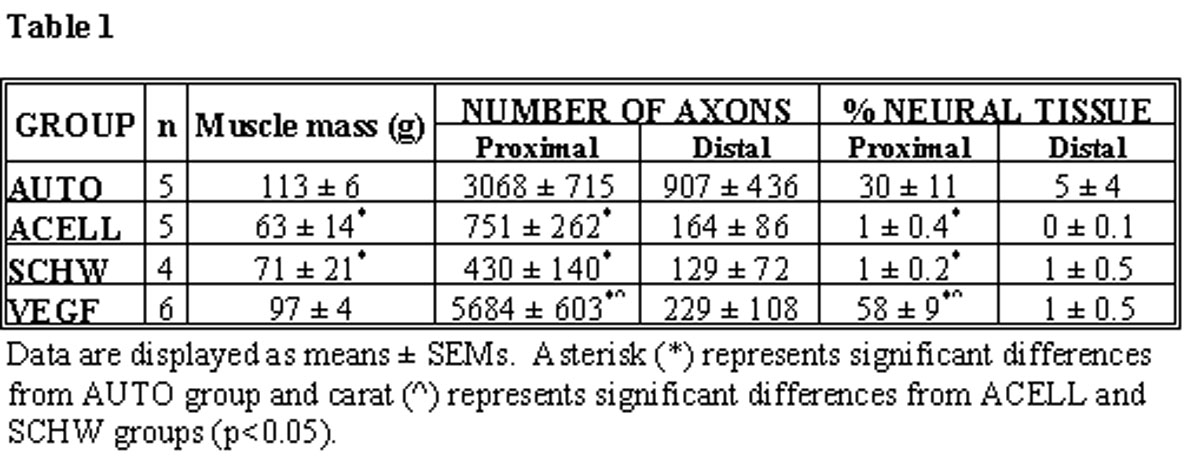Room 2 (Henry B. Gonzalez Convention Center)
Sunday, November 3, 2002
8:00 AM - 4:00 PM
Room 2 (Henry B. Gonzalez Convention Center)
Monday, November 4, 2002
8:00 AM - 4:00 PM
Room 2 (Henry B. Gonzalez Convention Center)
Tuesday, November 5, 2002
8:00 AM - 4:00 PM
Room 2 (Henry B. Gonzalez Convention Center)
Wednesday, November 6, 2002
8:00 AM - 4:00 PM
552
P68 - VEGF Enhances Axonal Sprouting in Acellular Nerve Grafts
Introduction: Options for reconstruction of peripheral nerve gaps are currently limited. Acellularized peripheral nerve grafts may be a reasonable alternative for short nerve gap reconstruction and with appropriate modifications, may be clinically useful for larger nerve gaps. One such potentially beneficial matrix modification incorporates VEGF into the acellular nerve graft. We hypothesized that VEGF treatment of acellular nerve grafts would improve axonal sprouting and elongation across the graft. Method: Peroneal nerves were harvested from 8 adult male, F344 rats and chemically acellularized utilizing a series of detergents. Acellularized nerve grafts were either incubated in Schwann cell culture, human recombinant VEGF solution, or saline. In adult, isogenetic rats, 2-cm nerve gaps were repaired with either the native nerve (AUTO group, n=5) or an identical length of one of the following alternatives: acellular nerve (ACELL group, n=5), Schwann cell seeded acellular nerve (SCHW group, n=4), or VEGF treated acellular nerve (VEGF group, n=6). The animals were evaluated with walking tracks at three-week intervals postoperatively. Fifteen weeks postoperatively, the peroneal nerves and EDL muscles were harvested for histomorphometric analysis and mass measurement respectively. Results: Walking track analysis revealed no significant differences in intermediate toe spread index between the four experimental groups. A significant increase in the total number of axons and the % neural tissue in the proximal nerve graft was identified in the VEGF treated grafts compared with the other groups (Figure 1) Conclusion: VEGF treatment of acellular nerve grafts results in improved neuroregeneration across the proximal nerve coaptation site suggesting enhanced axonal sprouting proximally. Distally, VEGF treatment did not increase the percent neural tissue suggesting that VEGF treatment of the acellular nerve graft by this technique did not enhance axonal elongation. Future investigations will explore various VEGF delivery mechanisms to improve both axonal sprouting and elongation in acellular nerve grafts.

See more of Posters
Back to 2002 Complete Scientific Program
Back to 2002 Meeting home
